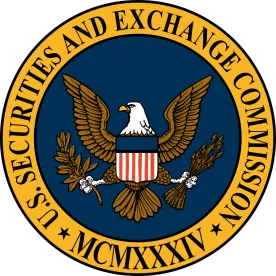On November 7, 2019, the SEC’s Office of Compliance Inspections and Examinations (OCIE) issued a risk alert outlining its top compliance observations from examinations of nearly 300 registered funds conducted over a two-year period, as well as issues identified from OCIE’s exam initiatives focusing on money market funds (MMFs) and target date funds (TDFs).
From the registered fund exams, the risk alert categorized the compliance deficiencies among four broad categories: (1) the fund compliance rule; (2) disclosure to investors; (3) the Section 15(c) contract review process; and (4) the fund code of ethics rule. OCIE’s observations and illustrative examples are summarized below.
Fund Compliance Rule
-
Failure to Tailor Compliance Programs to Funds’ Business Activities or Specific Risks. Absence of policies and procedures (1) to prevent funds from violating their own investment guidelines and limitations, (2) to review the appropriateness and accuracy of methods used to price securities or (3) to ensure advertisement disclosures are accurate and not misleading.
-
Failure to Follow or Enforce Policies and Procedures. Failure to follow or enforce policies and procedures requiring board approval or ratification of fair valuation determinations and to obtain multiple broker quotes in connection with cross trades.
-
Inadequate Service Provider Oversight. Failure of policies and procedures to provide for any ongoing monitoring or due diligence of outsourced valuation and pricing services; failure to have policies and procedures of sub-advisers approved by a fund’s board.
-
Failure to Perform Annual Reviews or to Address the Adequacy of Funds’ Policies and Procedures. Absence of documentation to substantiate the annual review of compliance programs; annual reviews that were conducted without addressing the adequacy of funds’ policies and procedures and the effectiveness of their implementation.
Disclosure to Investors
-
Incomplete or Potentially Misleading Disclosures. Inclusion of incomplete or potentially materially misleading descriptions in prospectuses, statements of additional information and shareholder reports of fund practices actually observed in staff exams; failure to disclose the payment of fees made to service providers or changes in investment strategy; identification of certain principal investment strategies in disclosures that had not been implemented or that were not expected to be implemented for the funds.
Section 15(c) Process
-
Reasonably Necessary Information Not Requested or Considered. Fund boards that may not have requested or considered information reasonably necessary to evaluate a fund’s investment advisory agreement; apparent failure by certain boards to consider relevant information related to the adviser’s profitability, economies of scale or peer group comparisons for the advisory fee; receipt by boards of incomplete responses to information requests and failure to request the omitted information.
-
Inadequate Discussion Forming the Basis of Board Approval. Shareholder reports that did not discuss adequately the material factors and conclusions that formed the basis for the board’s approval of an investment advisory contract; failure to retain copies of written materials the board considered in approving advisory contracts; lack of supporting documentation, such as board minutes, to enable OCIE staff to assess what information fund boards requested and considered.
Fund Code of Ethics Rule
-
Failure to Implement Code of Ethics. Lack of adequate procedures to prevent access persons from misusing material nonpublic information; failure to designate the proper individuals as access persons.
-
Failure to Use Reasonable Diligence to Prevent Violations. Failure to collect or review securities holdings and transaction reports of access persons; failure to enforce pre-clearance and holding period restrictions.
-
Failure to Comply with Code of Ethics Approval and Reporting Obligations. Failure to obtain initial board approval of the code; failure to provide boards with required annual reports regarding code of ethics violations and sanctions, or transmission of inaccurate reports to the board.
From the MMF initiative, the specific issues observed by OCIE staff fell within the following categories:
-
“Eligible Securities” and Minimal Credit Risk Determinations. Failure to include in credit files one or more of the factors required to be considered in determining whether a security presents minimal credit risks for eligibility purposes; failure to document adequately the periodic updating of credit files to support the eligible security determination; failure to maintain records to adequately support required determinations for certain investments of government MMFs.
-
Summary of Significant Stress Testing Assumptions. Failure to include the required summary of significant assumptions used in stress tests in reports provided to the board.
-
Policies and Procedures. Failure to adopt and implement compliance policies and procedures reasonably designed to address certain requirements under the MMF rule and other areas, such as policies and procedures that did not address periodic board oversight of certain MMF information, including the MMF’s net asset value deviation methods and the amount of the deviation.
-
Website and Advertising Materials. Failure to post on websites all information required by rule or posting of inaccurate information; failure to include all required legends in advertisements.
From the TDF initiative, the specific issues observed by OCIE staff fell within the following categories:
-
Incomplete and Potentially Misleading Prospectuses and Advertisements, including disclosures regarding asset allocations, glide path changes and the impact of these changes on asset allocations, and conflicts of interest, such as those resulting from use of affiliated funds and affiliated advisers.
-
Incomplete or Missing Policies and Procedures, including those for monitoring asset allocations, overseeing implementation of changes to glide path asset allocations, overseeing advertisements and monitoring the accuracy of disclosures regarding glide path deviations.
OCIE’s risk alert is available here.






 />i
/>i

